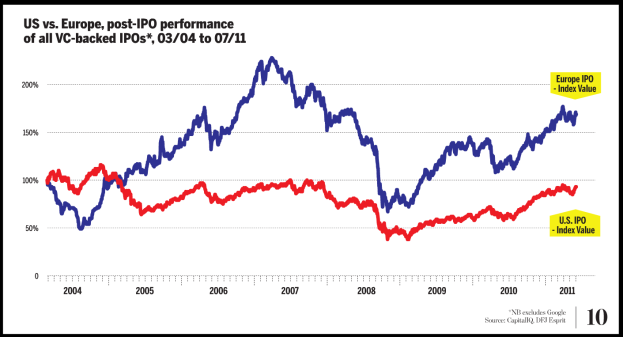 Silicon Valley is at the center of the venture capitalist world – but maybe not for long. And despite accusations of a struggling and limiting environment, a report from VC firm Earlybird shows that the European VC market could very well be giving the US a little competition in the near future. It’s a younger, newer atmosphere than in the US, where there is an older tradition of investment firms. Venture capitalism is relatively new to Europe, and it’s supposed to get stronger.
Silicon Valley is at the center of the venture capitalist world – but maybe not for long. And despite accusations of a struggling and limiting environment, a report from VC firm Earlybird shows that the European VC market could very well be giving the US a little competition in the near future. It’s a younger, newer atmosphere than in the US, where there is an older tradition of investment firms. Venture capitalism is relatively new to Europe, and it’s supposed to get stronger.
According to Earlybird, Europe VCs are producing higher exit multiples and lower entry valuations than the US, meaning that more stateside startups are receiving insanely high pre-IPO valuations but exiting their private stage at a considerably smaller worth in comparison to those in Europe. Sound familiar? You could probably list a few tech startups from the past year that were pegged at insanely high values and didn’t see the same numbers when they filed their S-1 forms.
In fact, since 2005 European VC-backed IPOs either matched or bested US VC-backed IPO performance. The catch is that there are simply more VC firms in the US. Our market is more mature, more expansive, and just all-around bigger. But this means that the handful of successful European VC firms are flourishing, and it has contributed to a buyer’s market. There’s a lack of confidence in investing in startups, keeping initial valuations lower and boosting capital efficiency well above that in the US. It might sound like a problem at first glance (less money, less confidence, fewer investors), but it’s actually creating a very profitable and promising situation for the European VC market.

The US VC scene is in a period of flux, it seems, but is generally considered to still be thriving. Everyone’s got an idea and a VC firm supporting it. Unfortunately, there have been a number of flawed projects that received ridiculous amounts of financial backing (we can’t help but think of Color). Is it that we’ve been the center of digital innovation for so long that our confidence is beginning to get the best of us? Or that so many great startups have come out of Silicon Valley in the past 10 years that any company with the right buzz words can get VCs to empty their pockets? Whatever it is, it’s precisely a problem Europe doesn’t have. In comparison, European startups are receiving lower entry valuations, less cash throughout their development, and approximately the same exit value, yielding a much higher return on investment.
There’s a persisting idea that the European VC culture is less aggressive, less innovation-focused than the US, and this has limited its approach to entrepreneurship. The numbers seem to suggest that while more sensible, European VC firms are less inclined to tackle as many ideas as US firms – for better or for worse. And this could actually be a thorn in our side: We’re more willing to fund an idea, but sometimes to a fault. And while the European method appears more practical and in the long term profitable, it is undeniably a more restricted approach that can negatively impact entrepreneurs.


